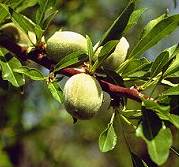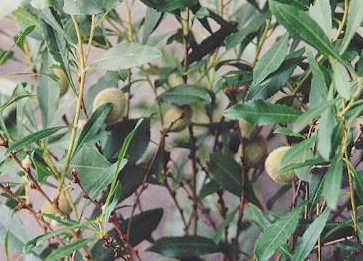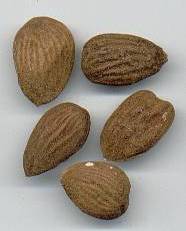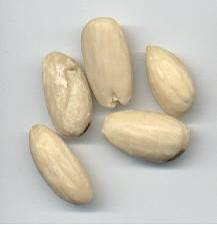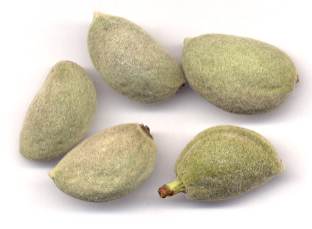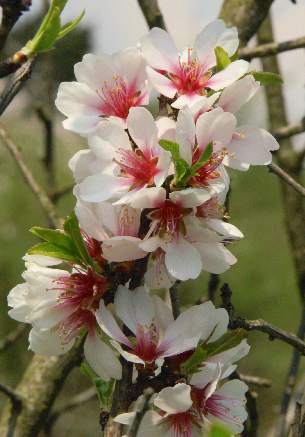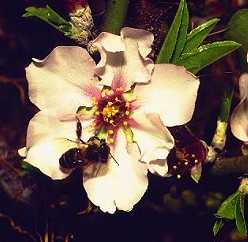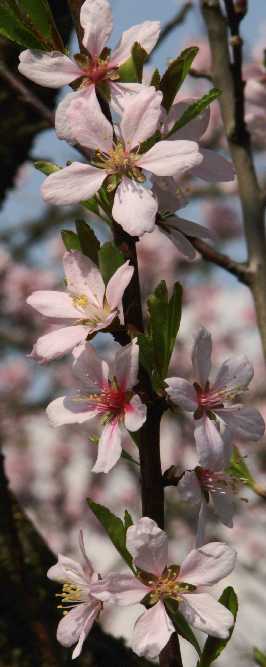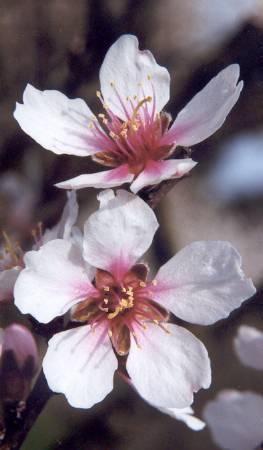
| |
Ripening almonds
|
|
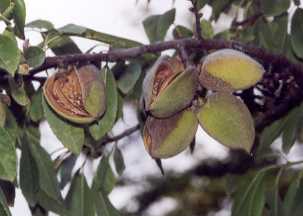
| |
Ripe almonds
|
|

| |
Ripe almond fruits on the tree
|
|

|
|
Almond branch with flowers
|
Sweet almonds are much used in Middle Eastern
cuisine; in Northern Indian cooking style, which was heavily influenced by
Persia, they are widely used, besides
poppy seeds,
as a sauce thickener (in whole India, wheat flour is
never taken for
this purpose). Typically, almonds are fried together with several spices (
mace,
cinnamon,
cumin and
garlic or
ginger) and then quenched with yoghurt.
Almond pieces browned in butter fat (ghi) are a popular,
aromatic decoration for fragrant biriyanis or other dishes of
meat with dried fruits. Some Indian desserts also contain almonds, e. g.
badaami kheer [बादामी खीर], a rather liquid almond custard flavoured with saffron or rose water.
Other types of kheer may contain rice, semolina or
thin noodles (vermicelli). For a fuller account of the Persia-influenced
cuisine of Northern India (Moghul cooking), see black
cumin.
The most famous product of Western cuisine containing almonds is
marzipan (also spelled marchpane). This confection is basically
an intensively kneaded mixture of ground almonds, sugar and aromatic essences,
frequently rose water. For this recipe, sweet
almonds are either used alone or flavoured with one or two bitter almonds per
100 g of sweet almond; you might also try just a hint of bitter
almond essence.
Since bitter almonds are toxic, they are sometimes hard to get in Western
countries, owing to paternalistic laws; bitter almond essence is, then,
the only way to achieve bitter almond aroma. This essence is made by distilling
a mixture of ground bitter almonds and water; it is more or less pure
benzaldehyde, containing no hydrocyanic acid. Almond essence is well-suited to
flavour cookies, cakes and marzipan. Since it is very strong, care must be
taken not to overdose. If not available, kernels of peach or apricot can also
be tried. Another possible substitute for bitter almonds is the tonka bean in small dosage; yet also this spice may
be not altogether harmless.
Bitter almonds’ usage in kitchen is mostly limited to sweets. They can,
though, be used to flavour spicy dishes, thus giving a very exotic taste.
Careful dosage is essential and requires a lot of skill or practice. You may
try them, for example, for Chinese fried pork (that’s not my idea, but Stobart’s).

